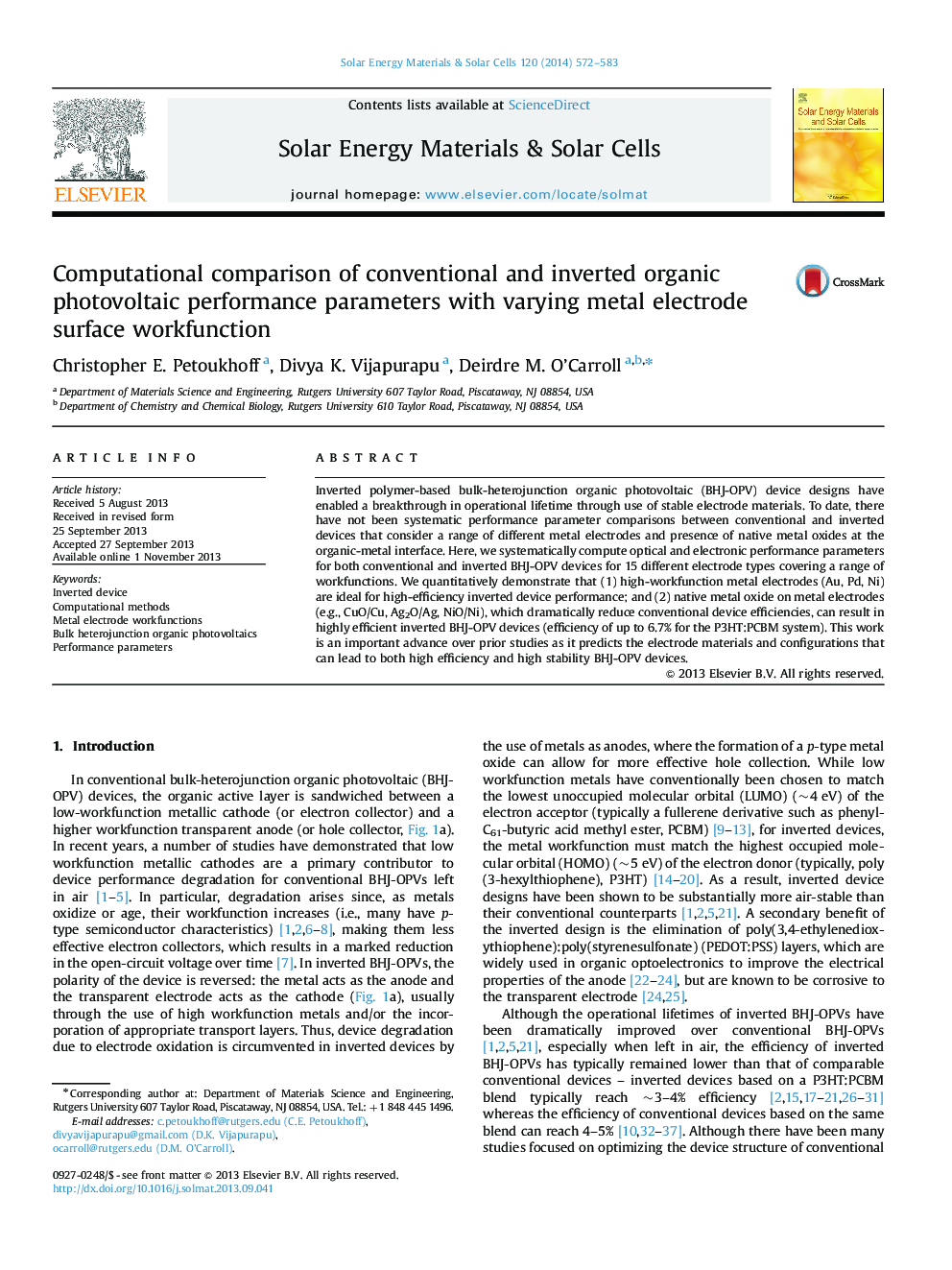| Article ID | Journal | Published Year | Pages | File Type |
|---|---|---|---|---|
| 78169 | Solar Energy Materials and Solar Cells | 2014 | 12 Pages |
•Performance parameters were calculated for OPVs for a range of metal electrodes.•High workfunction metal electrodes resulted in high-efficiency inverted OPVs.•Presence of native metal oxides was shown to be detrimental to conventional OPVs.•Presence of native metal oxides led to high-efficiency inverted OPVs.•Formation of an interface dipole was shown to improve OPV efficiency
Inverted polymer-based bulk-heterojunction organic photovoltaic (BHJ-OPV) device designs have enabled a breakthrough in operational lifetime through use of stable electrode materials. To date, there have not been systematic performance parameter comparisons between conventional and inverted devices that consider a range of different metal electrodes and presence of native metal oxides at the organic-metal interface. Here, we systematically compute optical and electronic performance parameters for both conventional and inverted BHJ-OPV devices for 15 different electrode types covering a range of workfunctions. We quantitatively demonstrate that (1) high-workfunction metal electrodes (Au, Pd, Ni) are ideal for high-efficiency inverted device performance; and (2) native metal oxide on metal electrodes (e.g., CuO/Cu, Ag2O/Ag, NiO/Ni), which dramatically reduce conventional device efficiencies, can result in highly efficient inverted BHJ-OPV devices (efficiency of up to 6.7% for the P3HT:PCBM system). This work is an important advance over prior studies as it predicts the electrode materials and configurations that can lead to both high efficiency and high stability BHJ-OPV devices.
Graphical abstractFigure optionsDownload full-size imageDownload as PowerPoint slide
